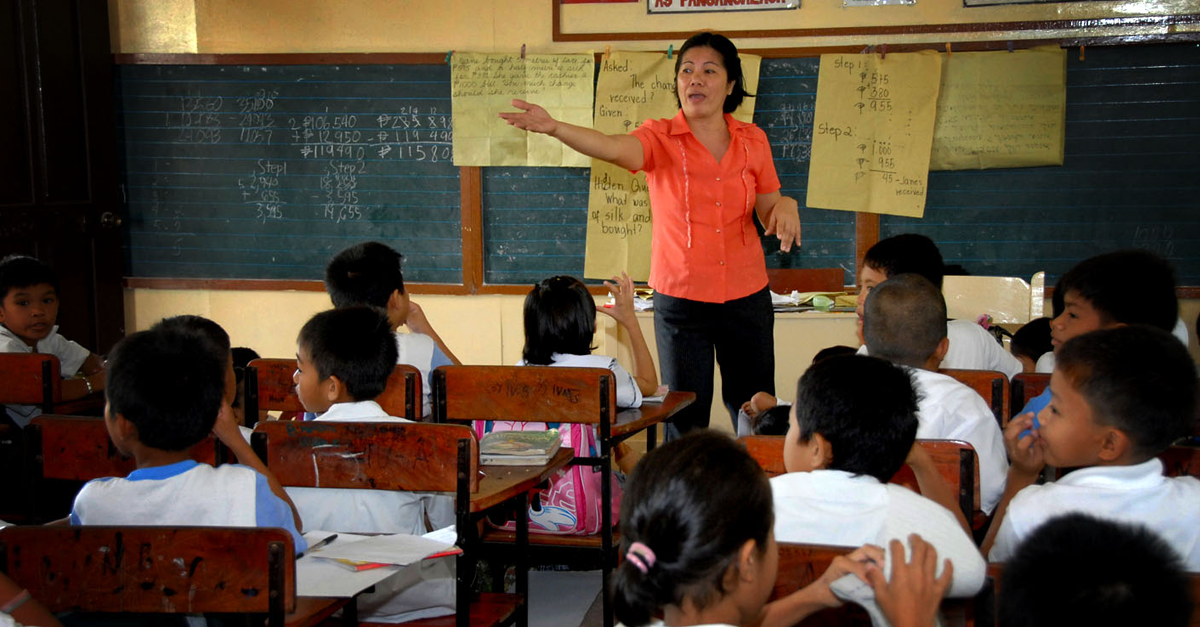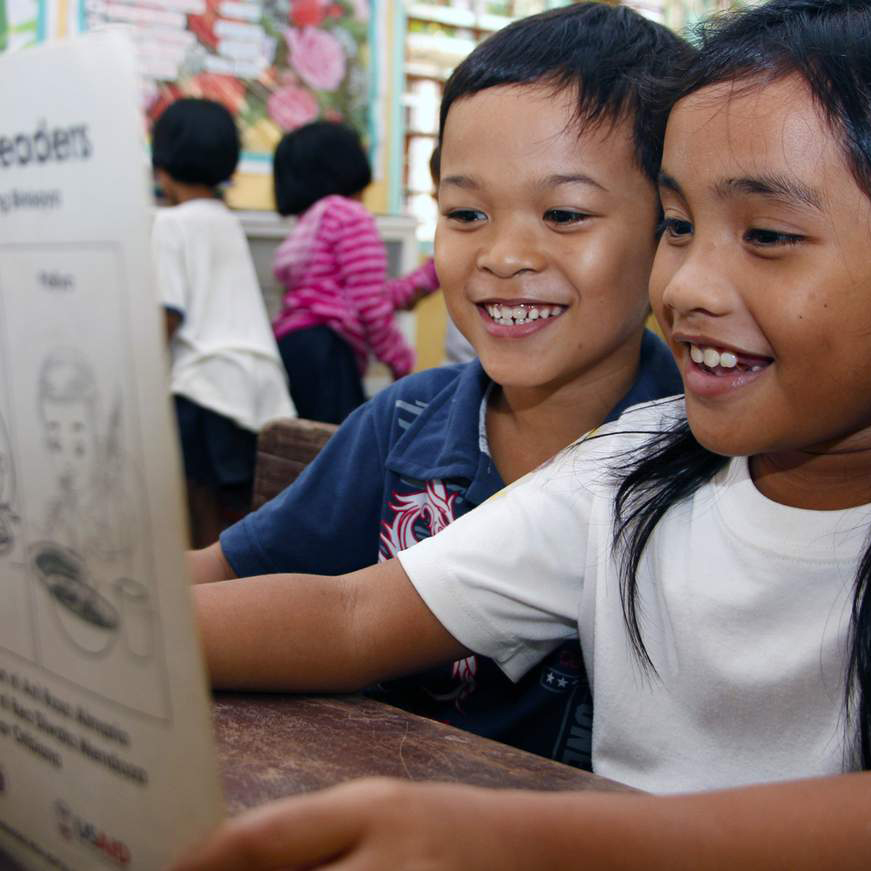Education has always been a vital component in human and societal development. The World Bank describes it as “a powerful driver of development and one of the strongest instruments for reducing poverty and improving health, gender equality, global peace, and stability.â€
Indeed, studies have shown that a population with a higher level of education is less likely to have people living in poverty, compared to a population with a lower educational attainment. This is evident in the cases of Asian countries such as Hong Kong, Singapore, South Korea, and Taiwan, which attained economic progress primarily by investing in education for their human capital formation.
A Global Learning Crisis in Education
Recognising the power of education in development, more and more countries have been investing in their educational system. These efforts seem to fall short though, as the United Nations has reported that there are still 264 million children and adolescents who remain unschooled.
While initiatives to make education more accessible is commendable, it must be pointed out that equal attention must be given to the quality of education being offered. As it is, most of those who are in school only receive limited and low-quality services, leading to what the World Bank calls a “global learning crisis.â€
This “learning crisis†refers to the fact that being in school does not automatically mean that one is actually learning. The truth is that there are still children who, despite being in school, reach young adulthood without learning the most basic skills–let alone develop the capacities that will help them build a fulfilling career.
State of Philippine Education
The Philippines is one of the countries that has been investing more in its educational system, seeing it as an instrument for accelerating the country’s human capital development. This is reflected in the Philippine Development Plan 2017-2022, which states that the government intends to “achieve quality accessible, relevant, and liberating basic education for all,†as well as “improve the quality of higher and technical education and research for equity and global competitiveness.â€
The Philippine education sector has therefore been given the highest allocation from the national budget, allowing the Department of Education (DepEd) to implement various educational reforms such as the K to 12 Program and the Universal Access to Quality Tertiary Education–all aimed at giving Filipino students equal access to quality education.
Unfortunately, the country’s efforts have also suffered from the “global learning crisis.†Despite the educational reforms, data from the DepEd reveals that National Achievement Test scores for both Grade 6 and Grade 10 students have been declining since schoolyear 2013-2014, indicating that students have a ‘low mastery’ of their subjects.
Perhaps one factor in this decline is the deteriorating quality of educators. Based on a study conducted by the World Bank, except for English at the elementary level, “the average elementary or high school teacher could answer fewer than half of the questions on the subject content tests correctly.â€

Education is a Shared Responsibility
Government may be the primary duty bearer in upholding the right to education, but the fact is everyone has a role to play in educating the next generation–particularly, according to the United Nations Educational, Scientific, and Cultural Organisation (UNESCO), in improving education.
We must understand that education is a shared responsibility between parents, schools, government, and community (including the private sector). It starts at home, where parents or families provide students with basic learning experiences. It continues in school, where their knowledge and skills are honed. The community extends this learning experience further by providing supportive learning environments, which include making private investments that support the government’s education efforts.
Today, the role of the private sector in education is becoming more and more crucial as the global learning crisis continues. Through the years, the private sector has been making both mainstream and impact investments in education, which provide valuable financial and strategic support for the government’s efforts to establish a system of education that is not only more accessible but also of a higher quality..
Education and Impact Investments
In the Philippines, numerous investment opportunities in the education sector abound. At present, large players are still dominating the investment landscape, with most investors still preferring mainstream ventures. Private equity firms, for example, have historically focussed on corporate education, training systems, vocational training programmes, for-profit education models, and educational technology.
Impact investments in Philippine education have also steadily gained popularity in recent years. However, it only accounts for a small share of total investments made in the education sector, as most impact investments in the country are still directed primarily on financial services, workforce development, agriculture, and energy.
The Philippine government has numerous education reform initiatives that could benefit from the attention and support of impact investors. Various investment opportunities can be found in programs such as: 1) improving education facilities; 2) creating new teaching positions; 3) developing human resources; and 4) acquiring learning tools and equipment, and other instructional materials.
Aligning with the UN’s Sustainable Development Goal number 4–to ensure inclusive and equitable education and promote lifelong learning opportunities for all–impact investors could support education through two primary channels:
1. Direct: straight into schools, vocational and professional education training (VPET) providers, and technology and services providers; and
2. Indirect: through intermediaries that serve education providers, such as financial services for education, and other financial institutions.

Direct Channels
I. Schools
Research shows that attending a good school has more impact on children’s academic progress than their gender or family background. This is because the quality of teaching affects children’s social behaviour and intellectual development, as well as their chances of improving their livelihood and creating generational impact.
For example, Open Society Institute explains that one year of primary schooling can boost wages by 5 to 15%, while each year of secondary school increases wages by up to 25%. By investing in schools, impact investors can safeguard students’ development while generating financial returns.
A noteworthy case is that of Bridge International Academies, a for-profit that runs complementary community schools that use an “academy-in-a-box†model. With support from various impact investors, it has established hundreds of schools across Africa and India since 2007. It has so far educated 750,000 children who have consistently scored higher than the national average in exit exams, such as the Kenyan primary exit exams (for four consecutive years), and the Ugandan primary leaving exam (for two consecutive years).
II. Vocational and Professional Education and Training
Vocational training contributes to development by enhancing employability and human capital in emerging markets, thus ensuring a student’s transition from education to employment. This impact investing opportunity benefits both providers and investors as well as the students themselves. The former receive financial returns whilst the latter have improved employment prospects and livelihoods. Various potential revenue models are also created for both the organisation and its investors, because it gives them access to the labour market after job-specific training is completed.
A prime example is EdventureCo, an education platform established in 2017 by Arowana, to equip students with relevant skills in the fields of building and construction, and information technology. Training in building and construction is provided through Everthought College, while information and technology-related training is offered through DDLS. To date, EdventureCo has already trained 196,000 students across its campuses in Australia and Southeast Asia.
III. Technology and Services Providers
Impact investors looking into technology and services providers can invest in education software development, distance learning programmes, and integrated management or back-office support for school chains. Aside from their use in the education sector, innovations generated from this investment channel could also be utilised to reduce costs and improve quality across a variety of public and private applications.
Technology may present a particularly promising arena for impact investors, particularly in developing innovations that have crosscutting commercial potential (especially if these can be deployed in large-volume markets).
One example of an impact investment made with a technology and services provider is Omidyar Network, which invested in South Africa’s Siyavula, an educational technology provider. Siyavula developed the low-cost adaptive learning tool, “Intelligent Practiceâ€, which was tailored specifically for high school mathematics, physics, and chemistry. To date it has completed more than 36 million study exercises; published 10 million textbooks; and administered 31 types of qualifications/exams since 2002.

Indirect Channels: Financial Services for Education
Investing in financial services for education is not exactly common practice in the Philippines yet; however, as the market develops, deal opportunities will surely follow.
Poor and lower-income families in the country may find school fees and tuition prohibitive to their child’s education, making it more likely for them to take out low-interest student loans. Providing such financial services for this developing market presents many opportunities for investors.
This option is actually a popular investment channel since it is still considered part of finance, which is currently the most prevalent impact investment sector in the country. It also helps that, according to a Global Impact Investment Network/J.P. Morgan survey, financial services for education appeals closer-to-market while attracting competitive returns.
One example of financial services for education is the Regional Education Finance Fund for Africa (REFFA), which was initiated by KfW Development Bank and funded by the German Federal Ministry for Economic Cooperation and Development. As a regional education finance facility for Africa, REFFA has provided funding and technical assistance to nine financial institutions in eight African countries, and has also provided financial services to 587 schools and 150,000 students and learners.
Choosing the Right Impact Investment
Impact investing means investors could support activities or business models that improve the Philippine education system, as well as build a more rounded sector. It also gives investors an opportunity to participate in broader ecosystem-building efforts that will support stronger public sector education. Because opportunities have remained largely untapped, the Philippine education sector presents a diverse option to deploy capital.
Impact investment channels–both direct and indirect–have varied capital requirements and risks. Direct investments carry with it certain drawbacks, such as firm sizes being too small or transaction costs being too high, and is a generally greater risk for investments.
Investments through intermediaries or impact funds, on the other hand, are a generally safer option, and could allow investors to distribute more capital. Through this channel, investors can either take on larger-scale projects, or spread their risk across a range of models with relatively lower transaction costs.
But whichever channel one may choose to invest in, what matters is the opportunity to participate in improving the state of education and curbing the current global learning crisis. By sharing in this responsibility, investors are contributing to poverty reduction, and ultimately, supporting greater and better human and societal development that ensures continuing generational impact.

